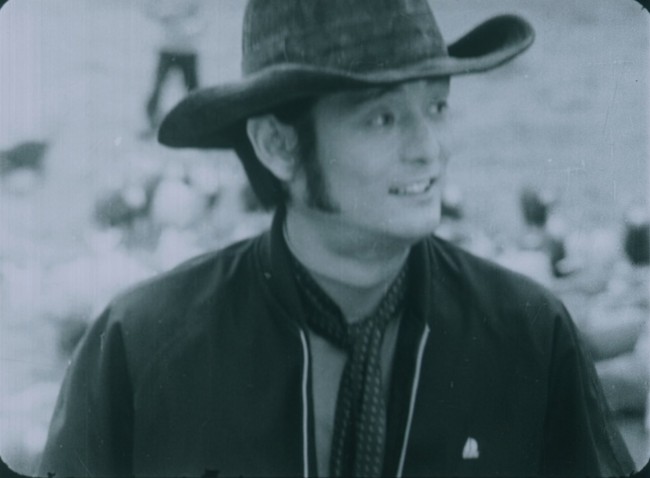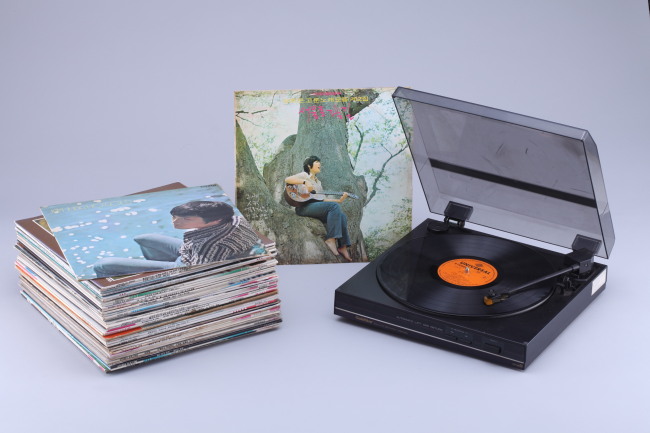
Many people are probably familiar with the history of blue jeans ― how denim pants moved from work clothes for California gold miners in the 19th century to a must-have item for rebellious youngsters in the 1950s and ’60s to street wear that can be found in almost everybody’s wardrobe.
An exhibition that opened in Seoul last week offers a rare glimpse into how the garment became part of the Korean wardrobe and how Korean wearers came to love its individuality and intimacy.
“Jeans have become a universal cultural icon that defies the limits of a particular time, people or nation. It is also said that jeans defy six things ― age, gender, social status, nationality, season and TPO (time, place and occasion),” Chun Jin-gi, chief of the National Folk Museum of Korea, said during a press preview of the exhibition.
“This (exhibition) is a result of our two-year research on denim both in Korea and abroad. We want to share with visitors the stories about many people that we have encountered through jeans,” he said.

The exhibition begins with the birth of blue jeans at the hands of Levi Strauss in 1873 for miners during the California gold rush and shows how they became a symbol of rebellious youth and a cultural icon of America itself.
The brief introduction is followed by the main show on how denim pants were introduced in Korea and who wore them.
“Blue jeans were introduced to Koreans by U.S. soldiers after the Korean War (1950-53). The soldiers wore them when they didn’t wear uniforms,” explained Vanya Lee, the lead curator for the exhibit.
To show how Koreans embraced the garment in the decades that followed, the curator interviewed some 500 people ― most of them ordinary Koreans.
Lee said the exhibition focuses more on stories about the wearers than on some isolated antique pieces.
It was also difficult to collect items, Lee added, because “ironically things from a more recent past are hard to collect in Korea now than relics from the Joseon era.”
“No one keeps old clothes. Particularly, if they are mass-produced, they have no special meaning,” he added.
One of the interviewees who shared their jeans story was Lee Jae-yeon, the first model ever to pose in jeans in Korea.
“It was very hard to get a pair at that time. We went to Namdaemun or Dongdaemun (markets) and asked vendors who dealt with U.S. military supplies for a pair of jeans. The vendors made a call when they got one,” the 68-year-old says in a video clip that is part of the multimedia material on show.
 |
Lee Jae-yeon was the first Korean model ever to pose in jeans. (National Folk Museum of Korea) |
 |
LPs from the ’70s (National Folk Museum of Korea) |
By the 1970s, jeans had become readily available in Korea. For the young generation, they were a symbol of the youth culture, something that many of their parents’ generation didn’t approve of.
Singer Yang Hee-eun recalled the scornful looks she used to get in the ’70s when she performed on stage in jeans. The cover of her 1971 debut album, which is on display, shows her wearing a denim shirt and jeans.
“Some (older singers) even said they refused to stand on the same stage with me, just because I wore jeans on stage,” she says in a recorded clip.
Apart from interviews, the exhibition has various other materials on display, including some artworks by San Francisco-based artist Ben Venom that are made from denim and a pair of jeans made in North Korea.
In one corner, a DJ booth is installed, reenacting the music cafes where youngsters in jeans used to hang out in the ’70s and ’80s.
“This exhibition is not complete as it is now. We invited visitors to share their jeans stories with us,” Lee said.
The exhibition runs through to Feb. 23, 2015, at the National Folk Museum in central Seoul. Admission is free. For details, visit www.nfm.go.kr.
By Lee Sun-young (
milaya@heraldcorp.com)











![[Weekender] Korea's traditional sauce culture gains global recognition](http://res.heraldm.com/phpwas/restmb_idxmake.php?idx=644&simg=/content/image/2024/11/21/20241121050153_0.jpg)